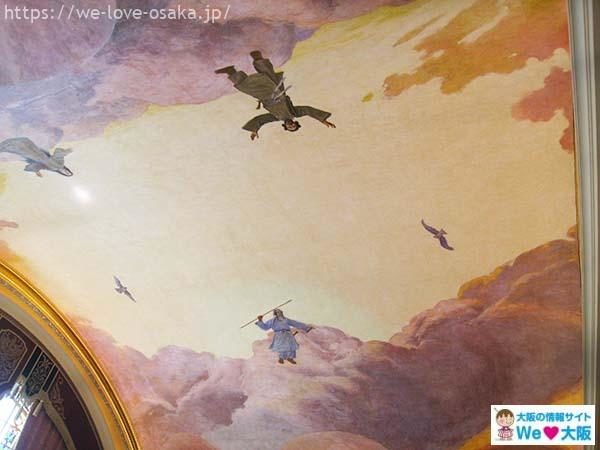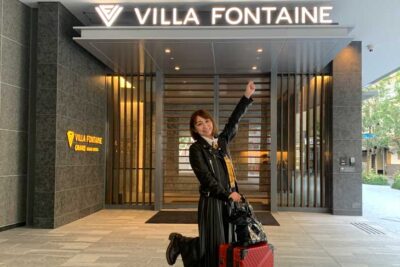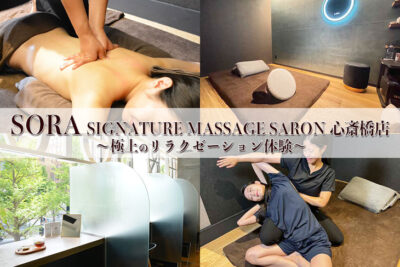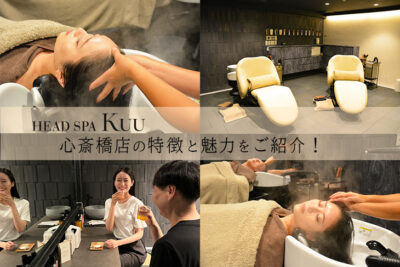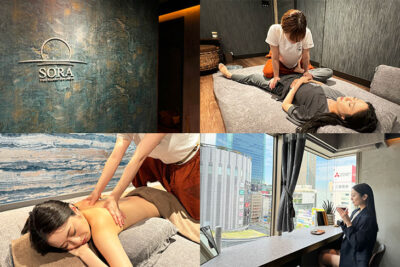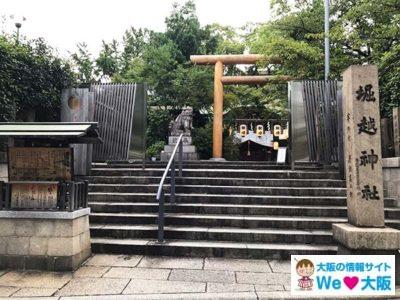- Top
- Historical Sites
- Osaka City Central Public Hall – A detailed guide to this retro landmark
Osaka City Central Public Hall – A detailed guide to this retro landmark
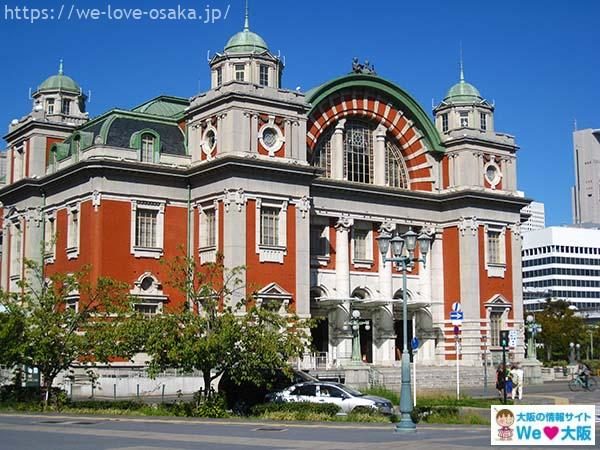
Here is a special guided tour of the Osaka City Central Public Hall. Many of you may have heard of the Public Hall, but have never been inside! I am an Osaka resident myself, and I was one of the first people to visit.
“I’d like to see it once, but is it worth the money?”
To resolve these concerns, we invite you to first experience a special room guided tour here.
Here we not only introduce the guided tours, but also the application process, fees, and access from the nearest stations, Yodoyabashi and Kitahama Stations on the Keihan Railway.
目次
- 1. What is Osaka City Central Public Hall like?
- 2. About Special Room Guided Tours
- 3. How can I sign up for a special room tour?
- 4. When are there special room guided tours?
- 5. Guided tours with secret gifts
- 6. Access
- 7. Basic Information
- 8. Summary
1. What is Osaka City Central Public Hall like?
 Before we begin our guided tour, a little about the public hall.
Before we begin our guided tour, a little about the public hall.
The public hall was completed in 1918 and has a history of more than 100 years.
You may be thinking, “If the building is that old, won’t it collapse during an earthquake?”
But don’t worry about that!
In order to protect the public hall from earthquakes and other disasters, preservation and construction to incorporate a seismic isolation structure has been underway since 1999.
In 2002, construction was successfully completed and the building was reopened. At that time, it was also designated as a National Important Cultural Property.
2. About Special Room Guided Tours
The guided tour of special rooms introduced in this article allows visitors to see special rooms that are not usually open to the public, while listening to explanations by the staff of the public hall. The tour takes about 30 minutes. There are two guided tours available.
Basic course: 500 yen (tax included)
Special course: 2,000 yen (tax included)
The only difference between the two courses is whether or not you choose to have lunch at the restaurant in the Auditorium. The special room tour remains the same. More information on how to apply and tour dates will be provided later.
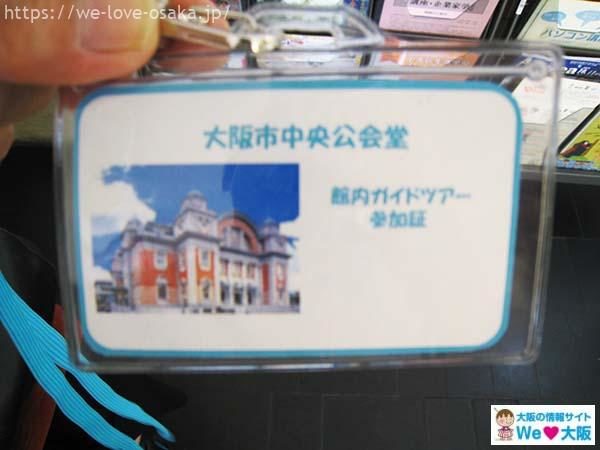 Here is the participation certificate for the guided tour.
Here is the participation certificate for the guided tour.
The public hall has one basement floor and three stories above ground, with large meeting rooms and conference rooms on the first and second floors, and medium and small meeting rooms, special rooms, etc. on the third floor.
The guided tour will take visitors around the exhibition rooms on the basement floor and the special rooms on the third floor, which are usually inaccessible.
2-1. First, go to the exhibition room
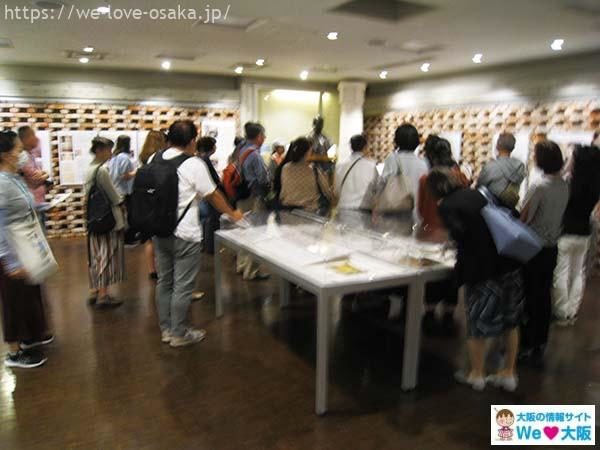 Here is the exhibition room. There were more than 20 people on the tour I attended. Also, you are allowed to take pictures on this tour.
Here is the exhibition room. There were more than 20 people on the tour I attended. Also, you are allowed to take pictures on this tour.
Einosuke Iwamoto, father of the public hall
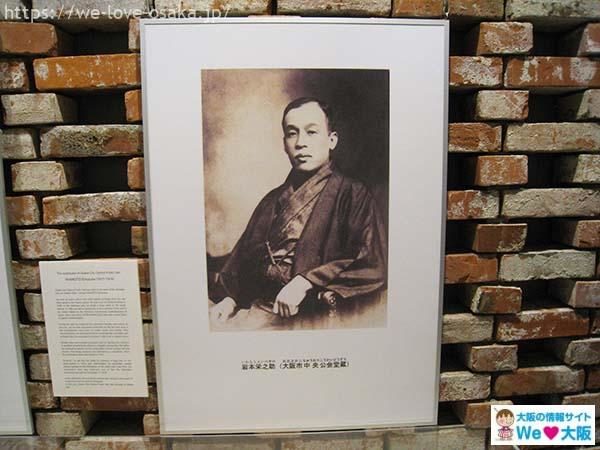 This public hall was built with the donation of one citizen. That person is Einosuke Iwamoto. He is also called the father of public halls.
This public hall was built with the donation of one citizen. That person is Einosuke Iwamoto. He is also called the father of public halls.
Einosuke Iwamoto was active in the Osaka stock market from the late Meiji to Taisho periods, and in 1907, he saved Kitahama from the confusion caused by the panic that followed the Russo-Japanese War by investing all of his wealth.
For this activity, he came to be known as “the benefactor of Kitahama” and “the righteous man of stock buying.”
At the age of 32, he joined a business delegation to the U.S. headed by Shibusawa Eiichi, who is now on the 10,000 yen bill. During his visit to the U.S., he learned that wealthy people were enthusiastic about public works and philanthropy.
After returning to Japan, he will offer a donation of 1 million yen (billions of yen in today’s value!) to the City of Osaka. ) to the City of Osaka. After much discussion, it is decided that the donation will be used for the construction of a public hall.
However, Einosuke Iwamoto, who had fallen on hard times in the stock market, took his own life at the age of 39 in 1916 without waiting for the completion of the public hall.
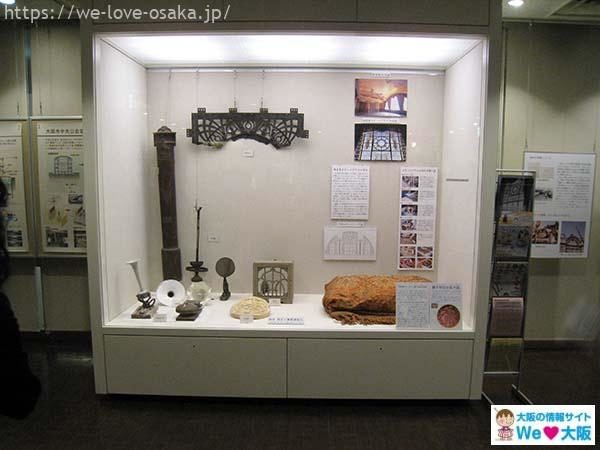 This case is decorated with curtains and furnishings from the time of construction.
This case is decorated with curtains and furnishings from the time of construction.
In the exhibition room, visitors can also see the history of the public hall, preservation and rehabilitation work, and tableware that was used at the time of construction.
The tour will be a rushed introduction, probably due to the 30-minute time limit. After visiting the special rooms, you may wish to take your time.
Now, we will move on to the special room you are looking for. We are looking forward to seeing what kind of room it is.
2-2. Onto the special room!
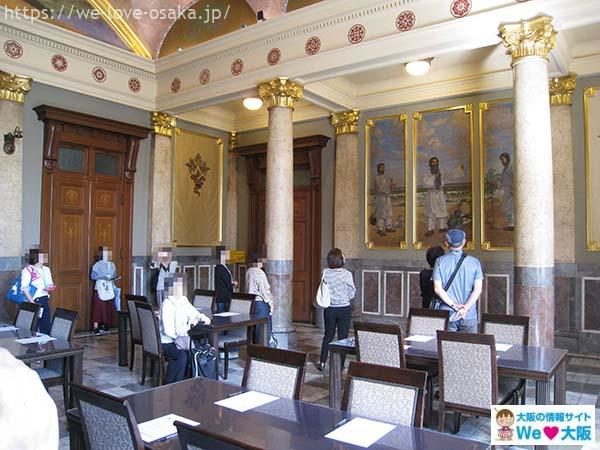 My first thought upon entering the special room was “Oh! Stylish~”. The other visitors must have felt the same way. Everyone immediately started taking pictures.
My first thought upon entering the special room was “Oh! Stylish~”. The other visitors must have felt the same way. Everyone immediately started taking pictures.
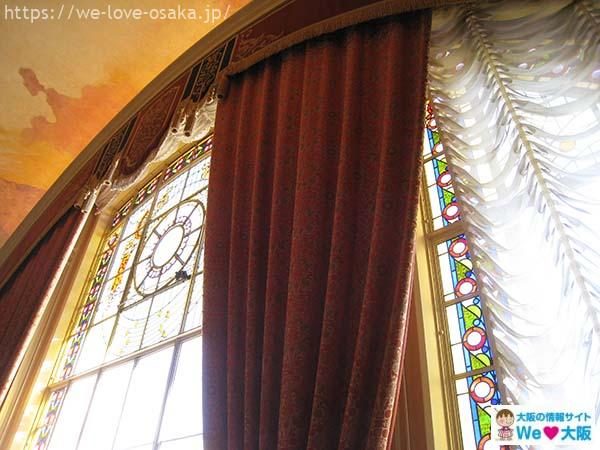 At the time of construction, the special room was used as a guest room for the mayors of Osaka and their guests, and was not open to the public. In the Taisho era, we would not have been able to enter.
At the time of construction, the special room was used as a guest room for the mayors of Osaka and their guests, and was not open to the public. In the Taisho era, we would not have been able to enter.
There are many highlights in the special rooms, which I will introduce one by one. Let’s start with the ceiling painting.
Ceiling painting
This ceiling painting depicts a scene from Japanese mythology about the creation of a nation, the Tenchika Ibiyaku (creation of heaven and earth).
In this scene, Izanagi and Izanami are given the Ameno-nuhoko by the deity Amatsu, which is used for nation-building.
The one with his hands outstretched wide is Izanagi, and the one kneeling is Izanami. The one wearing a blue kimono is the god Amatsu.
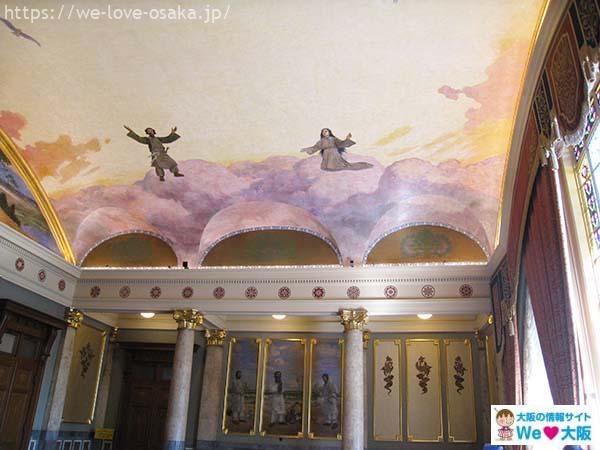 A little different angle. The ceiling decoration is also wonderful.
A little different angle. The ceiling decoration is also wonderful.
Guardians of Osaka written on the north and south walls
On the walls are depictions of the gods of industry and commerce. When the public hall was built, both industry and commerce were flourishing in Osaka. It is said that the gods were painted in the hope that their prosperity would continue.
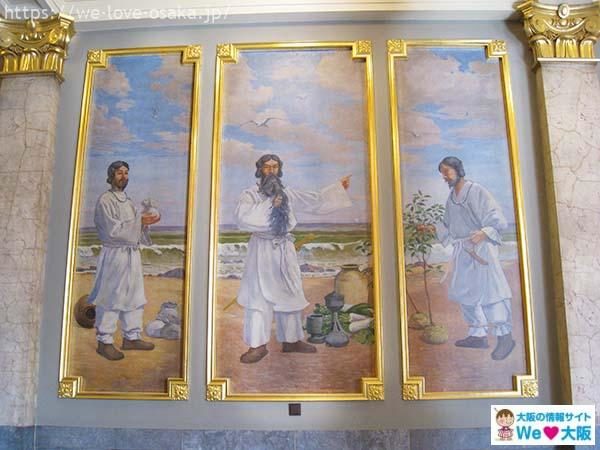 North mural. Depicted in the center is Susano Onomikoto, god of commerce.
North mural. Depicted in the center is Susano Onomikoto, god of commerce.
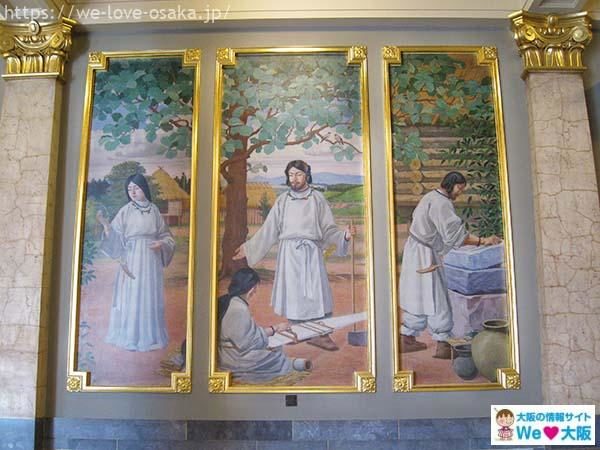 Mural on the south side. Depicted in the center is Futoda Manomikoto, the god of industry.
Mural on the south side. Depicted in the center is Futoda Manomikoto, the god of industry.
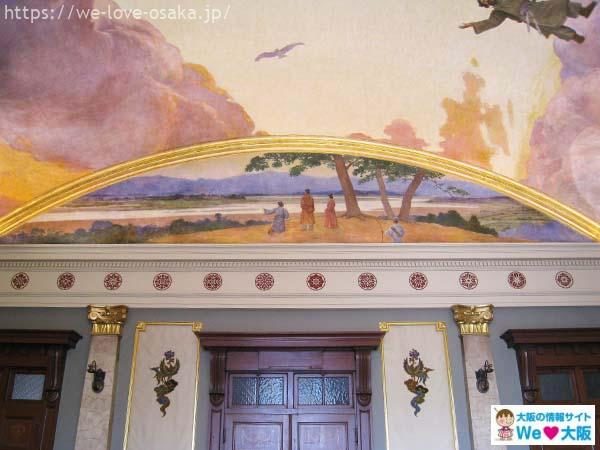 A mural is also between the ceiling painting and the door. Painted in the center is Emperor Nintoku. He is buried in the Nintoku Imperial Mausoleum, which is designated as a World Heritage site.
A mural is also between the ceiling painting and the door. Painted in the center is Emperor Nintoku. He is buried in the Nintoku Imperial Mausoleum, which is designated as a World Heritage site.
This mural depicts the Nintokuten no Uryou, an anecdote about Emperor Nintoku, who, upon learning that there was no smoke rising from the homes of the people (tami) to cook their meals, granted them tax-free status for three years.
Innovative stained glass
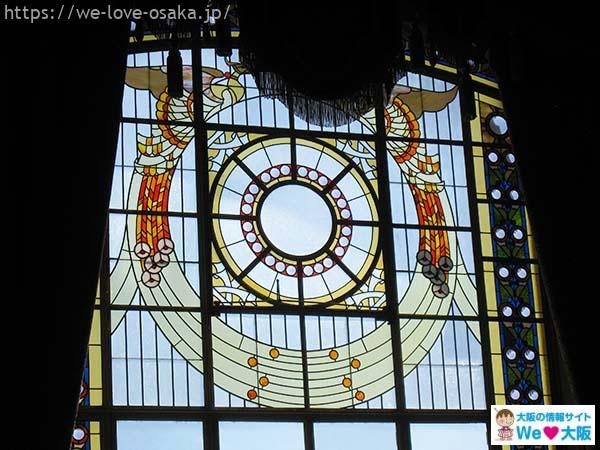 Here is the stained glass window in the special room. It depicts a phoenix, a symbol of celebration, and the Miotsukushi, the emblem of Osaka City.
Here is the stained glass window in the special room. It depicts a phoenix, a symbol of celebration, and the Miotsukushi, the emblem of Osaka City.
Here, the staff member guiding us asked a question: “What kind of mark is miotsukushi? Where is it drawn? Do you understand?”
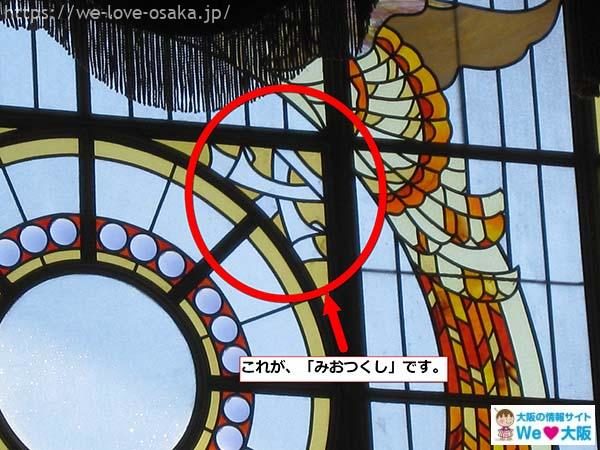 The white ribbon-like design at the feet of the phoenix is miotsukushi.
The white ribbon-like design at the feet of the phoenix is miotsukushi.
Since Osaka Bay had many shoals, wooden piles were erected on the shoals in the past to mark safe passage for ships. These wooden piles are called miotsukushi.
Osaka City has always had a close relationship with ships and waterways, which is why miotsukushi became the city emblem.
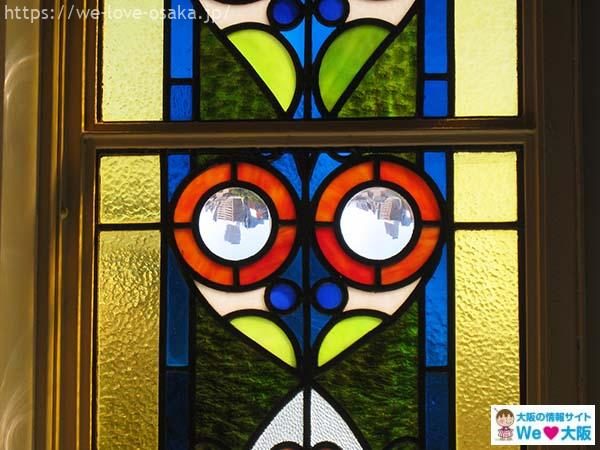 The round glass on either side of the stained glass windows. This glass is a convex lens, which diffuses the light coming in through the window and makes the interior look beautiful.
The round glass on either side of the stained glass windows. This glass is a convex lens, which diffuses the light coming in through the window and makes the interior look beautiful.
And if you look at this glass from a little distance, the view appears to be upside down.
Craftsmanship that cannot be replicated today
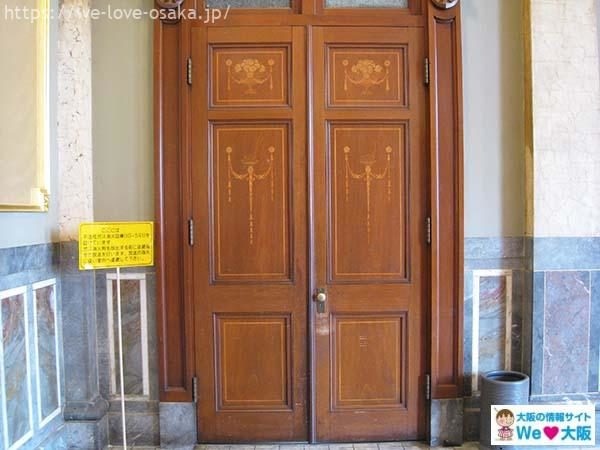 The door of the special room. The door is decorated. It is a very beautiful decoration, but it is not carved or written.
The door of the special room. The door is decorated. It is a very beautiful decoration, but it is not carved or written.
“Then how was it made?”
Let’s approach the door.
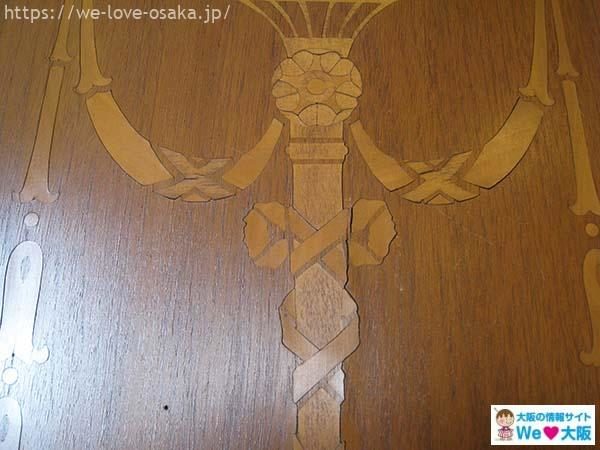 You can see a gap between the door and the decoration. The decoration on this door is made by inlaying different colors of wood. This method is called mokko-zogan (inlaid woodwork).
You can see a gap between the door and the decoration. The decoration on this door is made by inlaying different colors of wood. This method is called mokko-zogan (inlaid woodwork).
It is a very labor-intensive and highly technical method. No one can make it this way now. So although there is some damage, no one can repair it now.
Even the floor marble required intricate craftsmanship!
The marble used in the special rooms is said to be domestic marble, which is rarely available today.
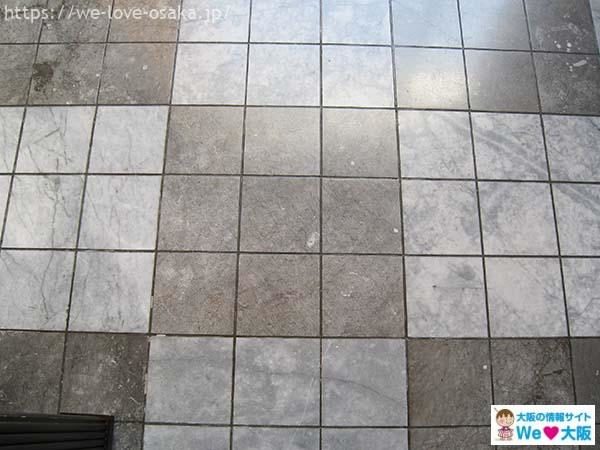 This is the marble floor. It looks like 9 black tiles and 9 white tiles are laid, but 9 tiles are one piece. One large marble tile is made to look like nine smaller marble tiles with a thin groove. These grooves are called decorative joints. The technique of putting in decorative joints is so difficult that it is said that there are no craftsmen today who can reproduce it.
This is the marble floor. It looks like 9 black tiles and 9 white tiles are laid, but 9 tiles are one piece. One large marble tile is made to look like nine smaller marble tiles with a thin groove. These grooves are called decorative joints. The technique of putting in decorative joints is so difficult that it is said that there are no craftsmen today who can reproduce it.
There are fossils in the marble
 The stain-like pattern is a fossil. It is a fossil of a bivalve shell. If you like fossils, this may be of more interest to you than the interior decorations.
The stain-like pattern is a fossil. It is a fossil of a bivalve shell. If you like fossils, this may be of more interest to you than the interior decorations.
Intricate Pillars
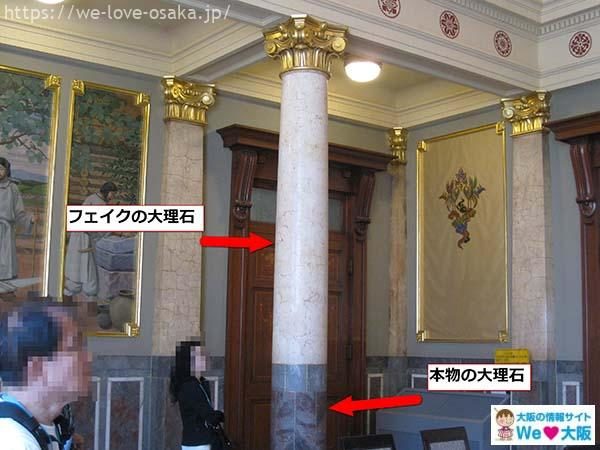 The columns here, even up close, all look like marble, but the white parts are plaster mixed with pigment and the black parts are real marble.
The columns here, even up close, all look like marble, but the white parts are plaster mixed with pigment and the black parts are real marble.
Touch it and you’ll notice a difference in temperature.
When I touched it at the request of the staff, I found that the black areas where real marble is used feel cooler.
The reason for this innovation was to reduce construction costs.
This was the end of the tour of the special rooms. They say time flies when you are having fun, and the 30 minutes flew by in a flash.
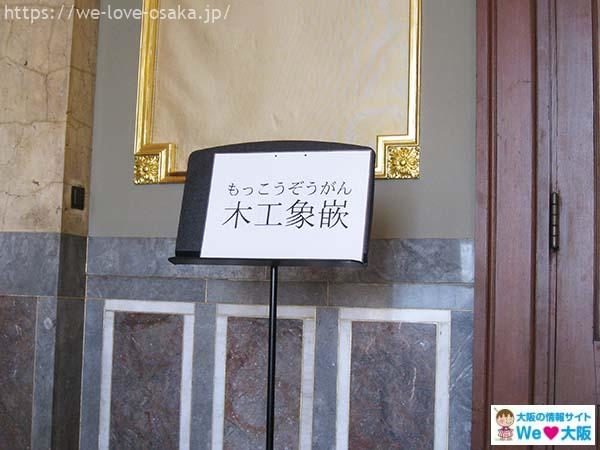 The explanations are very easy to understand, and unfamiliar words are explained using boards. Unfamiliar words such as “wood inlay” that appear in the explanation of the special rooms were also written on the board.
The explanations are very easy to understand, and unfamiliar words are explained using boards. Unfamiliar words such as “wood inlay” that appear in the explanation of the special rooms were also written on the board.
‘I didn’t know some of the words, and I couldn’t figure out how to explain them.’
There is no need to worry about this.
2-3. Return from the special room by stairs
The special room tour allows visitors to use the staircase, which is only available to those who use the public hall.
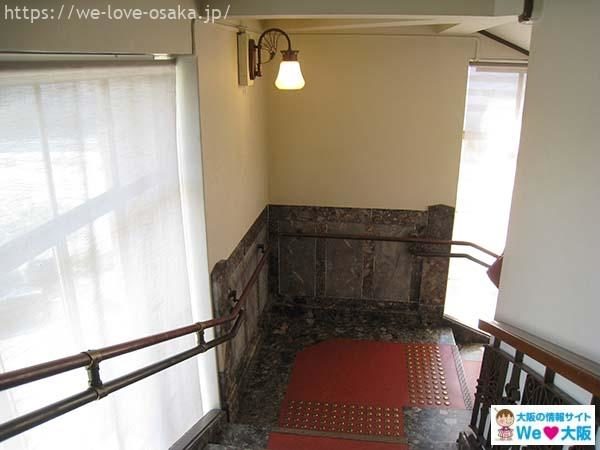 The retro look is very nice.
The retro look is very nice.
To return from the special room, it is recommended to use the stairs, although the elevator can be used.
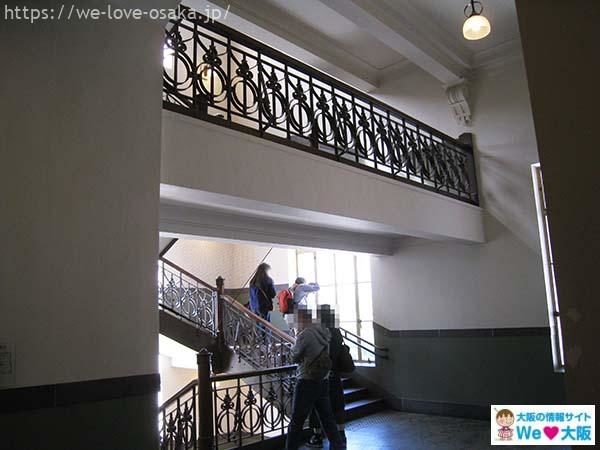 This is the second floor. Decorations are everywhere. Tour participants were also snapping pictures.
This is the second floor. Decorations are everywhere. Tour participants were also snapping pictures.
2-4. Don’t forget the free tour area!
The Auditorium has a free tour area. This area is open to visitors who are not users of the facility or tour participants.
The chairs from the time of construction have also been preserved.
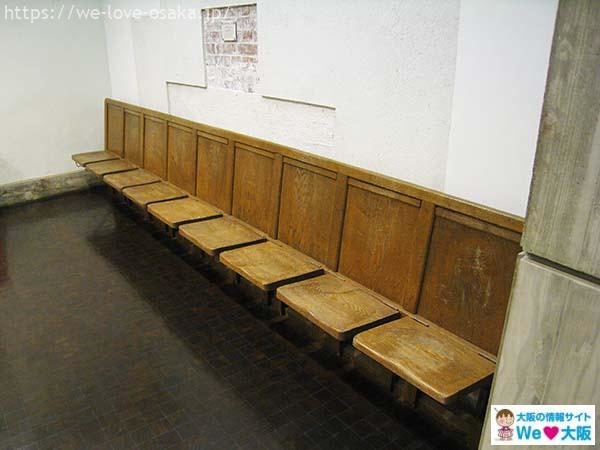 This chair is from when the public hall was built. It is made of wood.
This chair is from when the public hall was built. It is made of wood.
Until I sat down, I thought it would be uncomfortable because there was no cushion.
When I sat in the chair, it was comfortable. However, the size seems a little small. This may be because of the difference in physique between the Taisho era, when the public hall was built, and today.
Lobby of the Main Meeting Room
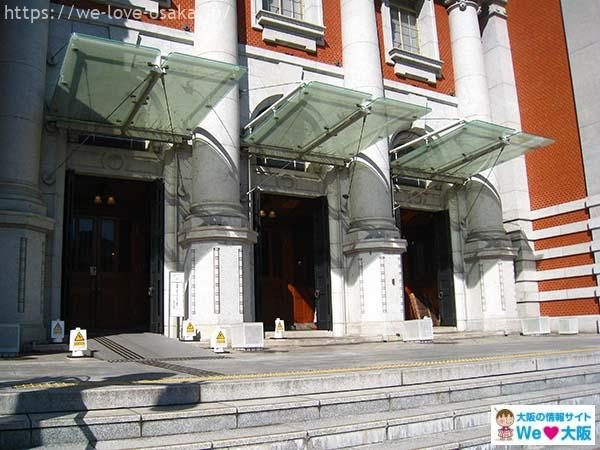 This is the east main entrance. Enter the lobby of the main meeting room from here.
This is the east main entrance. Enter the lobby of the main meeting room from here.
“Can we come in here?”
I felt the same way. I saw a sign at the door that said, “Feel free to enter,” so I gathered up my courage and went in.
However, it is not possible to visit the large assembly room when it is used for events.
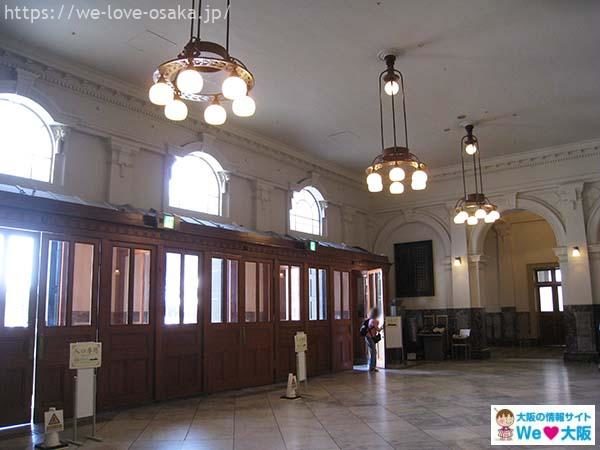 When you walk in, high ceiling, retro lighting. The luxurious atmosphere is very nice. I am glad I had the courage to enter.
When you walk in, high ceiling, retro lighting. The luxurious atmosphere is very nice. I am glad I had the courage to enter.
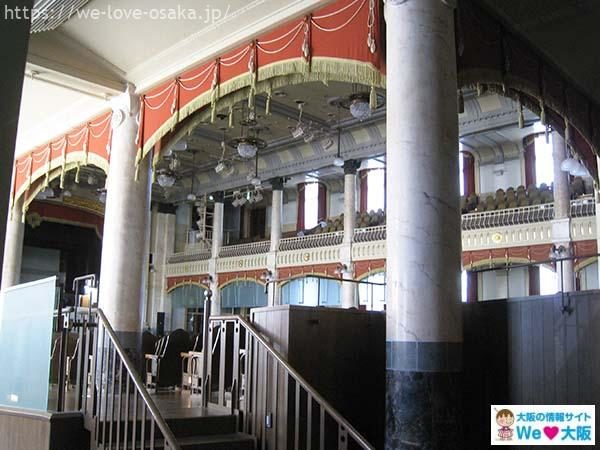 The large meeting room seen from the lobby. Chandeliers on the ceiling. The retro and luxurious feel of this room is also wonderful. I would like to enter it at least once.
The large meeting room seen from the lobby. Chandeliers on the ceiling. The retro and luxurious feel of this room is also wonderful. I would like to enter it at least once.
3. How can I sign up for a special room tour?
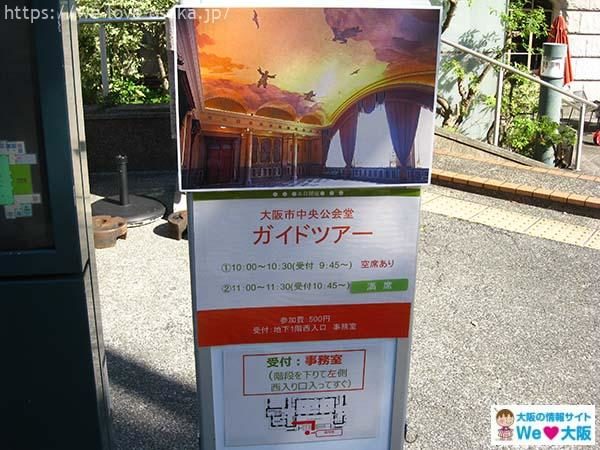 You can register for a guided tour of the special room via the web or by phone.
You can register for a guided tour of the special room via the web or by phone.
【Reserve online】
To apply from their website, click the link below. However, be aware the site is only available in Japanese.
Osaka City Lifelong Learning Information Provision System ICHONET
Type “館内ガイドツアー” in the keyword field and click the search button to reserve a guided tour.
【Reservations by phone】
To apply by phone, contact the Public Hall office.
Their phone number is 06-6208-2002
Hours are from 9:30 to 21:30; closed on the fourth Tuesday of each month (or the weekday immediately following a national holiday) and from December 28 to January 4 of the following year.
There are two ways to apply, and both have their advantages.
On the web, you can apply 24 hours a day, 7 days a week. If you call, you will speak directly with a Public Hall staff member, so you can learn about other events.
I have experience applying both on the web and over the phone. Once the application is complete, you will receive a confirmation email. It is very easy.
In the case of the phone call, as I mentioned earlier, I was told of other events where I could tour the special room. The date I requested was full, but I was able to visit the special room at another event.
4. When are there special room guided tours?
Guided tours are offered every week. However, the day of the week changes from month to month.
Please check the “Icho Net” introduced earlier or the website of the Public Hall for the detailed dates of the event.
Guided Tour of Osaka City Central Public Hall
5. Guided tours with secret gifts
It wasn’t mentioned on the public hall’s website or on the IchoNet registration page, but every attendee got a gift!
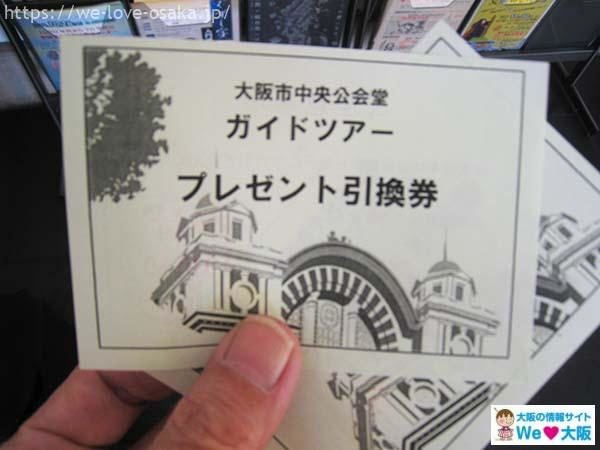 Here are the vouchers. I’m looking forward to seeing what gifts you will receive. I have two vouchers, but only one per person.
Here are the vouchers. I’m looking forward to seeing what gifts you will receive. I have two vouchers, but only one per person.
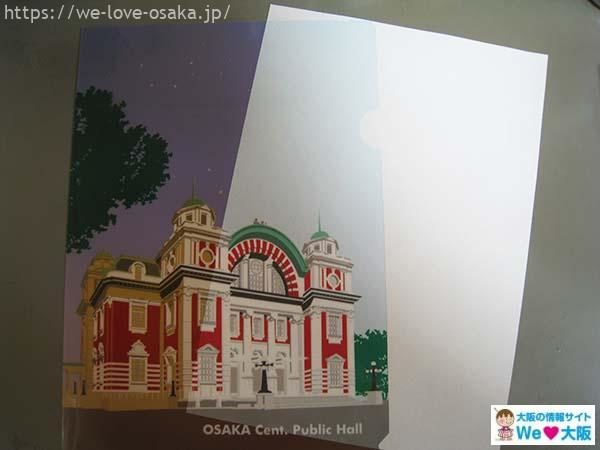 I received a clear file of the public hall. This clear file costs 305 yen (tax included). The tour fee is 500 yen, so it is a very good deal. (As of October 2019)
I received a clear file of the public hall. This clear file costs 305 yen (tax included). The tour fee is 500 yen, so it is a very good deal. (As of October 2019)
And the staff member who gave us the tour said
You can enjoy the public hall day and night!
That is to say.
I put the white paper in a clear file. It may be hard to tell from the picture, but you can indeed enjoy the night and day appearance.
6. Access
The nearest stations to the public hall are Yodoyabashi Station and Kitahama Station on the Keihan Railway. First, let us introduce access from Yodoyabashi Station.
6-1. From Yodoyabashi Station of Keihan Railway to the Public Hall
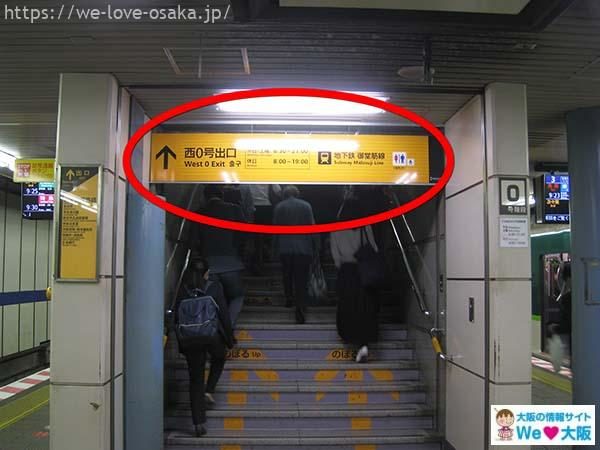 The most convenient exit from Yodoyabashi Station on the Keihan Railway is West Exit 0, closer to Osaka.
The most convenient exit from Yodoyabashi Station on the Keihan Railway is West Exit 0, closer to Osaka.
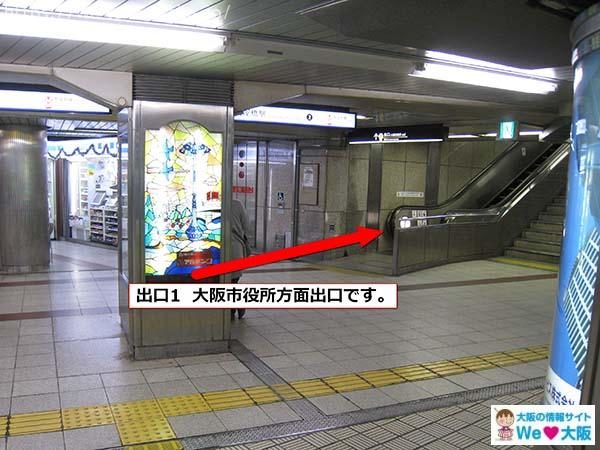 Use the up escalator at the front right.
Use the up escalator at the front right.
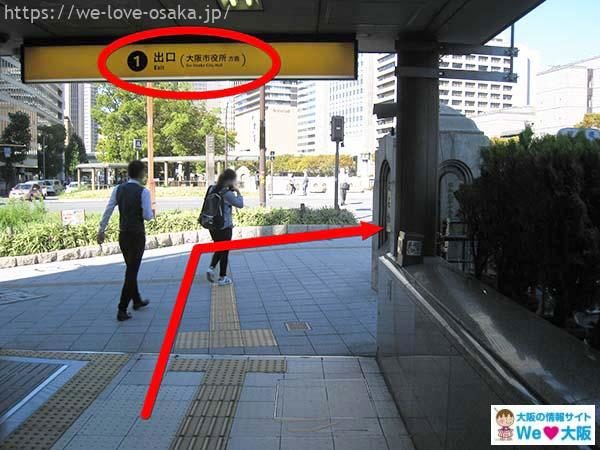 Looking left after exiting the escalator.
Looking left after exiting the escalator.
The road in front is Midosuji. Turn right here.
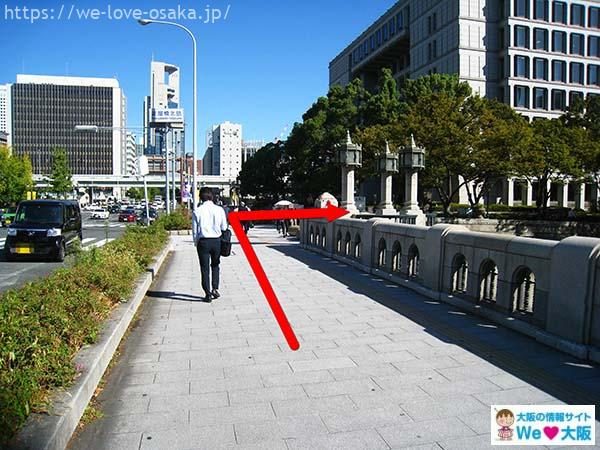 Turn right after crossing the bridge.
Turn right after crossing the bridge.
The Tosabori River flows below this point. Please be careful when using parasols, etc., as the wind can be strong on some days.
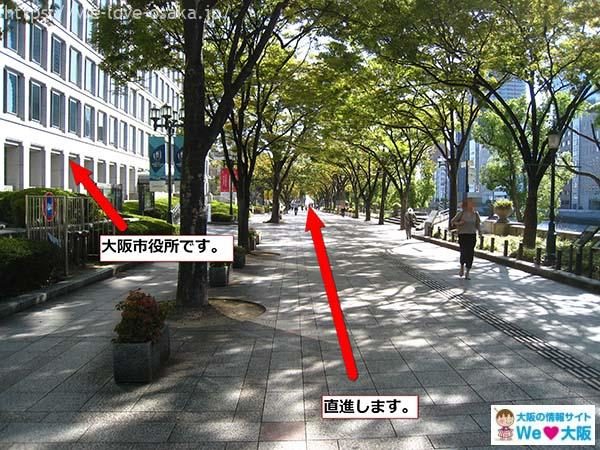 Turn right. The building on the left is Osaka City Hall. Go straight here.
Turn right. The building on the left is Osaka City Hall. Go straight here.
On sunny days, some people sketch here.
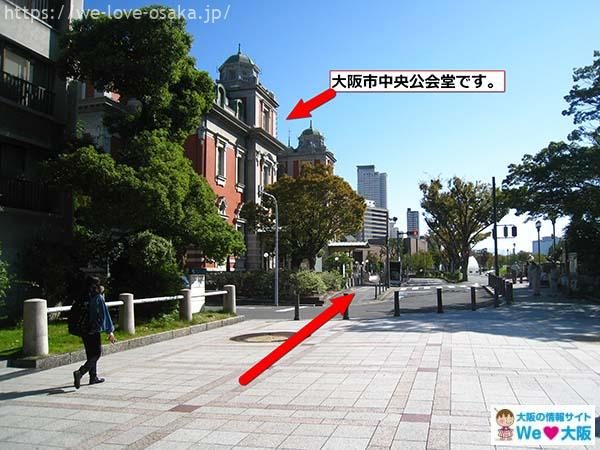 The red and white building you see ahead on your left is the public hall. There is no pedestrian crossing here. Please be careful of cars.
The red and white building you see ahead on your left is the public hall. There is no pedestrian crossing here. Please be careful of cars.
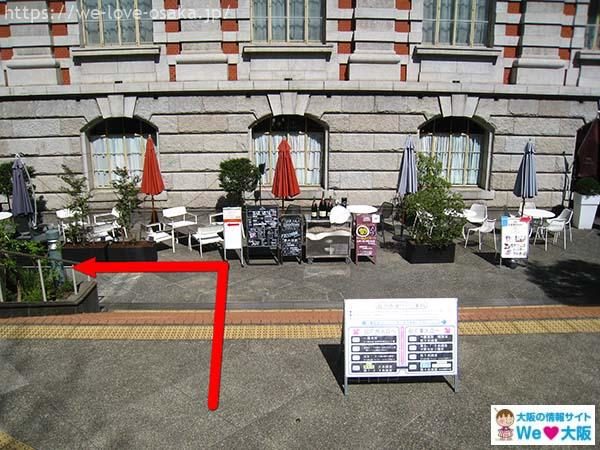 Thank you!
Thank you!
To the office where the guided tour reception desk is located, go down the stairs to the left.
6-2. From Kitahama Station of Keihan Railway to the Public Hall
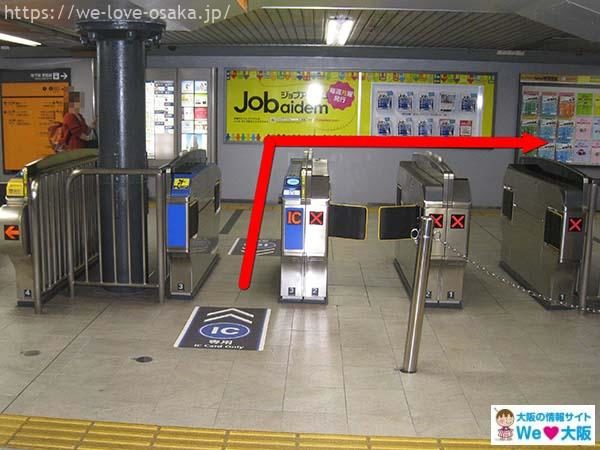 Ticket gates at Kitahama Station of Keihan Railway. There is only one ticket gate at Kitahama station.
Ticket gates at Kitahama Station of Keihan Railway. There is only one ticket gate at Kitahama station.
After exiting the ticket gate, turn right.
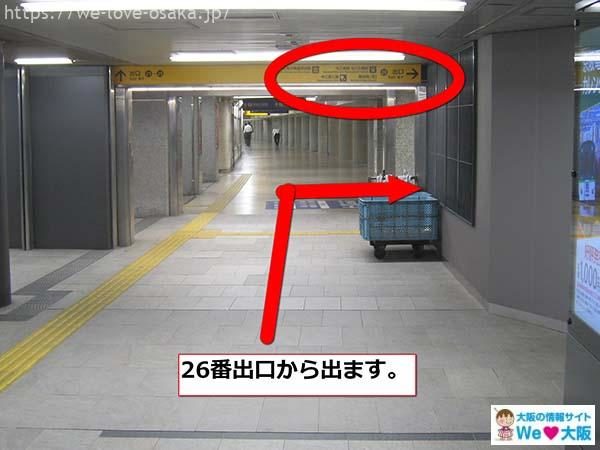 Turn right and go out from Exit 26 (for Nakanoshima Park and Museum of Oriental Ceramics).
Turn right and go out from Exit 26 (for Nakanoshima Park and Museum of Oriental Ceramics).
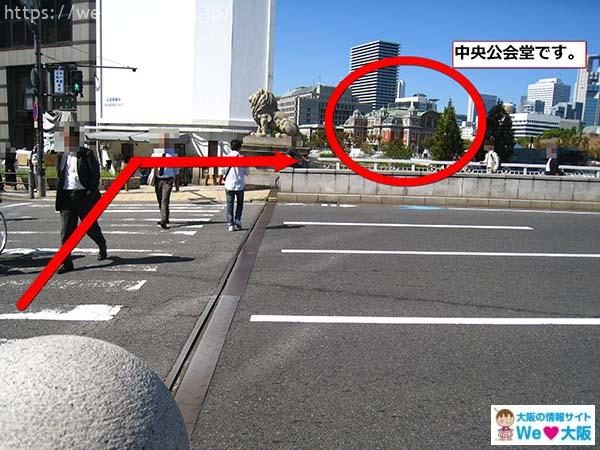 Cross the crosswalk and turn right. The street in front of you is Sakaisuji.
Cross the crosswalk and turn right. The street in front of you is Sakaisuji.
The public hall can be seen in the foreground.
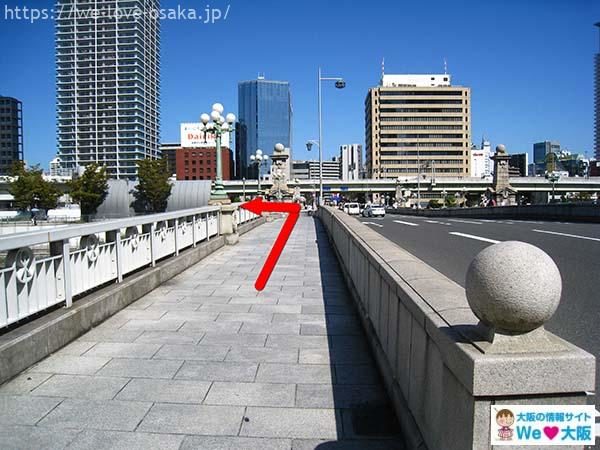 Go straight and the sidewalk will turn left. Follow the road.
Go straight and the sidewalk will turn left. Follow the road.
This bridge is Naniwa-bashi, one of the three Naniwa bridges (Naniwa-san-daikyo).
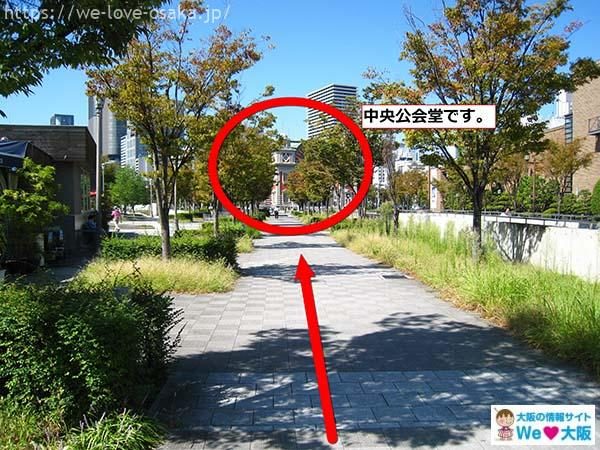 Continue straight ahead. The public hall can be seen in front of you, although it is hidden by tree branches.
Continue straight ahead. The public hall can be seen in front of you, although it is hidden by tree branches.
Thanks for your help, we are almost there.
7. Basic Information
Address: 1-1-27 Nakanoshima, Kita-ku, Osaka City
TEL: 06-6208-2002
Opening hours: 9:30 – 21:30
Reservations are accepted from 9:30 a.m. to 9:30 p.m.
Closed: Fourth Tuesday of each month (or the weekday immediately following a national holiday) and December 28 to January 4 of the following year
8. Summary
How was your guided tour of the special rooms of Osaka City Central Public Hall?
Doors and floors made with techniques that cannot be reproduced today. And the paintings all over the ceiling. It is much, much nicer in person.
Reservations can be made easily on the web, and access from the nearest station is easy to find. Why don’t you visit us?
Wishing you a wonderful holiday!
▼Click here for information on dining in the area
[Yodoyabashi Lunch] We are particular! Oishii recommendable lunch with a lot of individuality
[Kitahama gourmet] Never miss lunch and dinner! 11 recommendations☆Decisive edition!
▼Click here for information on sightseeing in the area
An in-depth look at Osaka’s leading business area [Keihan Yodoyabashi Station]!
Related article
-
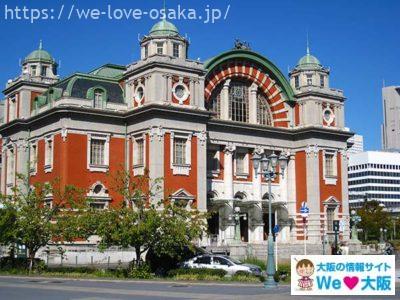
Osaka City Central Public Hall – A detailed guide to this retro landmark
Here is a special guided tour ……2023.03.20
-
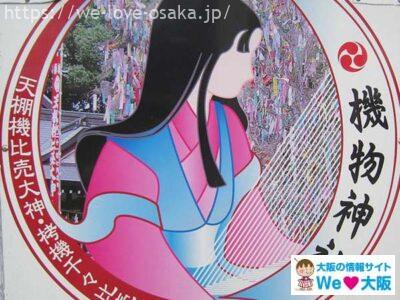
Hatamono Shrine- Birthplace of the Tanabata Legend and the Goddess Orihime
Hatamono Shrine enshrines Orih……2023.02.09
-
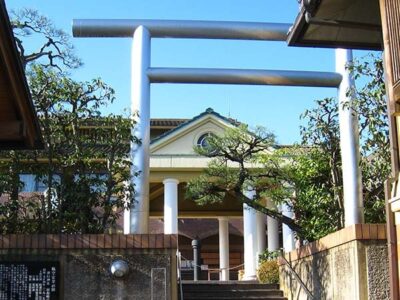
Hiko Shrine – Pray for a safe flight and fold your fortune into a paper airplane at “The Shrine of Flight”
Hiko Shrine translates as "The……2023.02.09
Introduction of writer
 Instagram
Instagram








